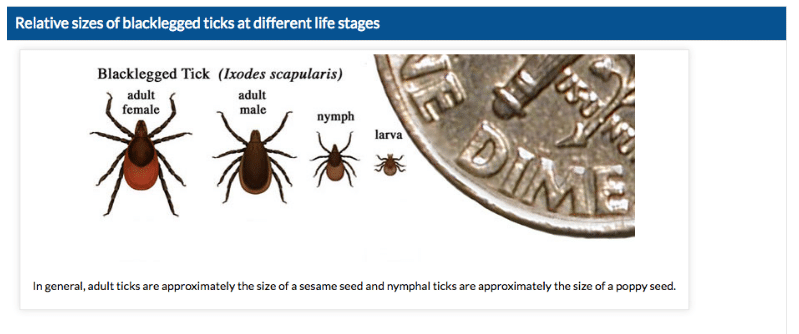
In PA, ticks are a real health threat. Our Philadelphia and Main Line pediatricians share guidelines on tick and mosquito repellent for kids, as well as other tips for keeping families safe this summer.
In Philadelphia, the spring and summer months are a time when many of us enjoy the outdoors, whether taking advantage of the nearby Schuykill river and Wissahickon trails or venturing farther away.
Engaging with nature and being active are important ways to nurture our children’s minds and bodies! However, we’re not the only ones increasing our outdoor activity during these months: unfortunately, tick and mosquito activity rises as well. While most may be familiar with the risk of Lyme disease from deer tick (black-legged tick) bites in our region, many are unaware of other infections that may be transmitted by ticks and mosquitos, whether locally or in other regions of the U.S. and abroad.
The good news: these exposures are preventable with safe practices, environmental awareness, and appropriate use of insect repellents. Read on for tips!
Before You Go Outside: How to Prevent Mosquitos & Ticks On Kids
Cover Up!
- Wear long-sleeved shirts and pants. Tuck shirt into pants and tuck pants into socks when heading into tick and mosquito-prone areas.
- Consider using clothing and gear (such as boots, pants, socks, and tents) that are treated with permethrin (an insecticide). You can buy pre-treated clothes or treat your own clothes. If treating items yourself, follow instructions carefully. Do not use permethrin directly on skin.
Choose Effective Mosquito & Tick Repellents for Kids
- Use a CDC-recommended and EPA-registered insect repellent. These products have been tested and proven to be both effective and safe for humans and the environment, when used as directed.
- The following provide effective protection against both ticks and mosquitos and are safe to use with children 2 months of age and older:
-
- DEET (up to 30% concentration), found in Ben’s, OFF! DeepWoods, and Repel Scented Family. While unwarranted fear continues to persist regarding DEET, it has the longest track record (over 6 decades) of safety and effectiveness in human studies.
- Picaridin, found in Natrapel, Sawyer, and some Avon Skin-So-Soft Bug Guard products.
- IR3535, found in Coleman SkinSmart and some Avon Skin-So-Soft Bug Guard products.
- In general, products with higher concentrations provide a longer duration protection.
- Oil of lemon eucalyptus (also called para-methane-diol or PMD), found in Repel and OFF! Botanicals, is CDC-recommended for use in repelling mosquitos, but should not be used in children under 3 years of age.
- Other natural topical products (e.g. rosemary, thyme, citronella oils), repellent wrist bands, ultrasonic devices, and garlic or vitamin B1 supplements provide brief and limited protection, if any, and should not be relied upon for effective tick and mosquito bite prevention.
How to Safely Apply Insect Repellent for Kids
- Apply insect repellents in open areas to prevent inhalation.
- Use a product with a protection duration that matches your expected outdoor exposure period, or reapply as needed. (See “Find the insect repellent that’s right for you”)
- When applying to young children, do not spray directly in the face. Instead, apply to your hands and pat onto your child’s exposed face and neck areas. Avoid eye and mouth area.
- Avoid applying insect repellents to hands of infants and young toddlers, due to their mouthing behaviors.
- Do not apply underneath clothing; only apply to exposed skin.
- Avoid insect repellent-sunscreen combination products. This may not only make your sunscreen less effective, but may also lead to over-application of the insect repellent. When also using sunscreen, apply it first, let it dry, then apply repellent.
- Keep repellents out of reach of children.
Be Aware of Higher Risk Settings
- Ticks
-
- Avoid wooded and brushy areas with high grass and leaf litter.
- Walk in the center of trails.
- Remember that ticks may become active once temperatures reach 37°F or higher.
- Mosquitos
-
- Avoid areas with standing or slow-moving water.
- Mosquitos may be daytime biters or evening-to-morning biters, depending on species. Do not assume risk of mosquito exposure based on time of day.
- Use screens on windows and doors, or use air conditioners to keep your house cool during warmer weather.
When You Come Back Inside: How to Check for Ticks on Kids
Check your clothing for ticks. Remove found ticks or tumble dry clothes in a dryer on high heat for 10 minutes to kill ticks on dry clothing (if clothing is damp or being washed, it will require longer dryer times). Remember, ticks are often tiny!

Image source: https://www.cdc.gov/lyme/transmission/index.html, accessed May 14, 2017
Conduct a full body tick check. Make sure to check these common hide-outs:
- Under the arms
- In and around the ears and scalp hair
- Inside belly button and around the waist
- Back of the knees and between the legs
- Showering within 2 hours of coming indoors has been shown to reduce your risk of getting Lyme disease, and is a great opportunity to do a tick check.
- Tips on how to remove ticks
If you’ve been bitten by a tick:
- The risk of acquiring a tick-borne illness depends on many factors, including geographic region where the tick bite occurred, what type of tick, and how long the tick was attached.
- Monitor for signs of illness such as rash or fever in the days and weeks following the bite. If your child becomes ill in the 3-4 weeks after a tick bite, contact your medical provider.
- While symptoms of many tick-borne illnesses may be non-specific, become familiar with the rash associated with the early stages of Lyme disease, and common look-alikes.
Prevent Ticks on Pets
- Use tick control products to prevent family pets from bringing ticks into the home.
- Tick collars, sprays, shampoos, or “top spot” medications should be used regularly. Consult your veterinarian and be sure to use these products according to the package instructions.
- For more information on animals and health, see Preventing Ticks on Your Pet.
Protect Your Home
- Tick control
- Regularly remove leaf litter and clear tall grasses and brush around homes.
- Place wood chips or gravel between lawns and wooded areas to keep ticks away from recreational areas.
- Keep play areas and playground equipment away from shrubs and bushes.
- Removing plants that attract deer and constructing physical barriers may help discourage deer from entering your yard and bringing ticks with them.
- To limit mosquito-breeding areas, empty/cover items that hold water, such as buckets, planters, toys, birdbaths, flowerpots, or trash containers at least weekly.
More Resources on Tick & Mosquito Prevention
Note: The information contained in this article has been provided as general health information and does not constitute specific medical advice for your child.
 33 Rock Hill Rd
33 Rock Hill Rd 1740 South Street
1740 South Street 2365 East York Street
2365 East York Street